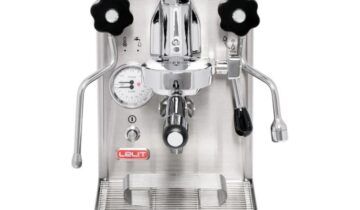Introduction
Espresso and coffee machines have become an essential part of our daily lives, providing us with our much-needed dose of caffeine. To ensure that these machines continue to function optimally and have a long lifespan, regular maintenance and cleaning are crucial. In this guide, we will provide you with some valuable tips on how to properly maintain and clean your espresso and coffee machines.
Why is Maintenance Important?
Regular maintenance of your espresso and coffee machines is essential for several reasons:
- Improved Taste: Over time, coffee residue and oils can build up in the machine, affecting the taste of your coffee. Regular maintenance helps to remove these deposits, ensuring a fresh and flavorful cup of coffee every time.
- Longevity: Proper maintenance can extend the lifespan of your machine. By keeping the internal components clean and in good condition, you can prevent damage and avoid costly repairs or replacements.
- Efficiency: A well-maintained machine operates more efficiently, ensuring that it brews coffee at the right temperature and pressure. This not only improves the quality of your coffee but also saves energy.
Regular Maintenance Tips
Here are some regular maintenance tips that will help keep your espresso and coffee machines in top condition:
1. Daily Cleaning
After each use, it is important to clean the external parts of the machine. Wipe down the exterior with a damp cloth to remove any coffee spills or stains. Pay special attention to the steam wand and group head, as they can accumulate milk residue and coffee grounds.
2. Cleaning the Portafilter
The portafilter is an integral part of the espresso machine. To clean it, remove the filter basket and rinse it under warm water. Use a small brush to scrub away any coffee grounds that may be stuck to the basket. Make sure to also clean the gasket and the inside of the portafilter to prevent any buildup.
3. Descaling
Over time, mineral deposits from the water can accumulate in the internal components of the machine, affecting its performance. Descaling is the process of removing these deposits. Follow the manufacturer’s instructions on how to descale your specific machine. Typically, it involves running a descaling solution through the machine and then flushing it with clean water.
4. Changing the Water Filter
If your espresso or coffee machine has a water filter, make sure to change it regularly as per the manufacturer’s recommendations. This will help ensure that the water used in brewing is free from impurities, resulting in a better-tasting coffee.
5. Lubrication
Some espresso machines require regular lubrication of moving parts to prevent wear and tear. Check the manufacturer’s instructions to see if your machine requires lubrication and, if so, the recommended lubricant to use.
Deep Cleaning Tips
In addition to regular maintenance, it is important to give your espresso and coffee machines a deep cleaning periodically. This will help remove any stubborn residue and ensure that all parts are thoroughly cleaned. Here are some tips for deep cleaning:
1. Cleaning the Brew Group
The brew group is the heart of the espresso machine, and it is important to clean it regularly. Consult the manufacturer’s instructions on how to remove the brew group and clean it properly. Use a brush to scrub away any coffee oils or residue. Rinse it thoroughly and let it dry before reassembling.
2. Cleaning the Grinder
If your machine has a built-in grinder, it is important to clean it regularly to prevent any buildup of coffee oils and residue. Consult the manufacturer’s instructions on how to remove the grinder burrs for cleaning. Use a brush or a vacuum cleaner to remove any coffee grounds or debris. Wipe down the grinder with a damp cloth and let it dry before reassembling.
3. Cleaning the Steam Wand
The steam wand can accumulate milk residue over time, affecting its performance. To clean it, purge any remaining milk from the wand and wipe it with a damp cloth. If there is stubborn residue, you can soak the wand in a solution of warm water and detergent. Make sure to rinse it thoroughly before using it again.
4. Cleaning the Water Reservoir
The water reservoir should be cleaned regularly to prevent any buildup of impurities. Empty the reservoir and wash it with warm, soapy water. Rinse it thoroughly and let it dry before refilling it with fresh water.
Conclusion
Maintaining and cleaning your espresso and coffee machines is essential for ensuring their longevity and optimal performance. By following the tips provided in this guide, you can enjoy a delicious cup of coffee every time and avoid any unnecessary repairs or replacements. Remember to consult the manufacturer’s instructions for specific cleaning and maintenance guidelines for your machine. Happy brewing!



 No products in the cart.
No products in the cart.